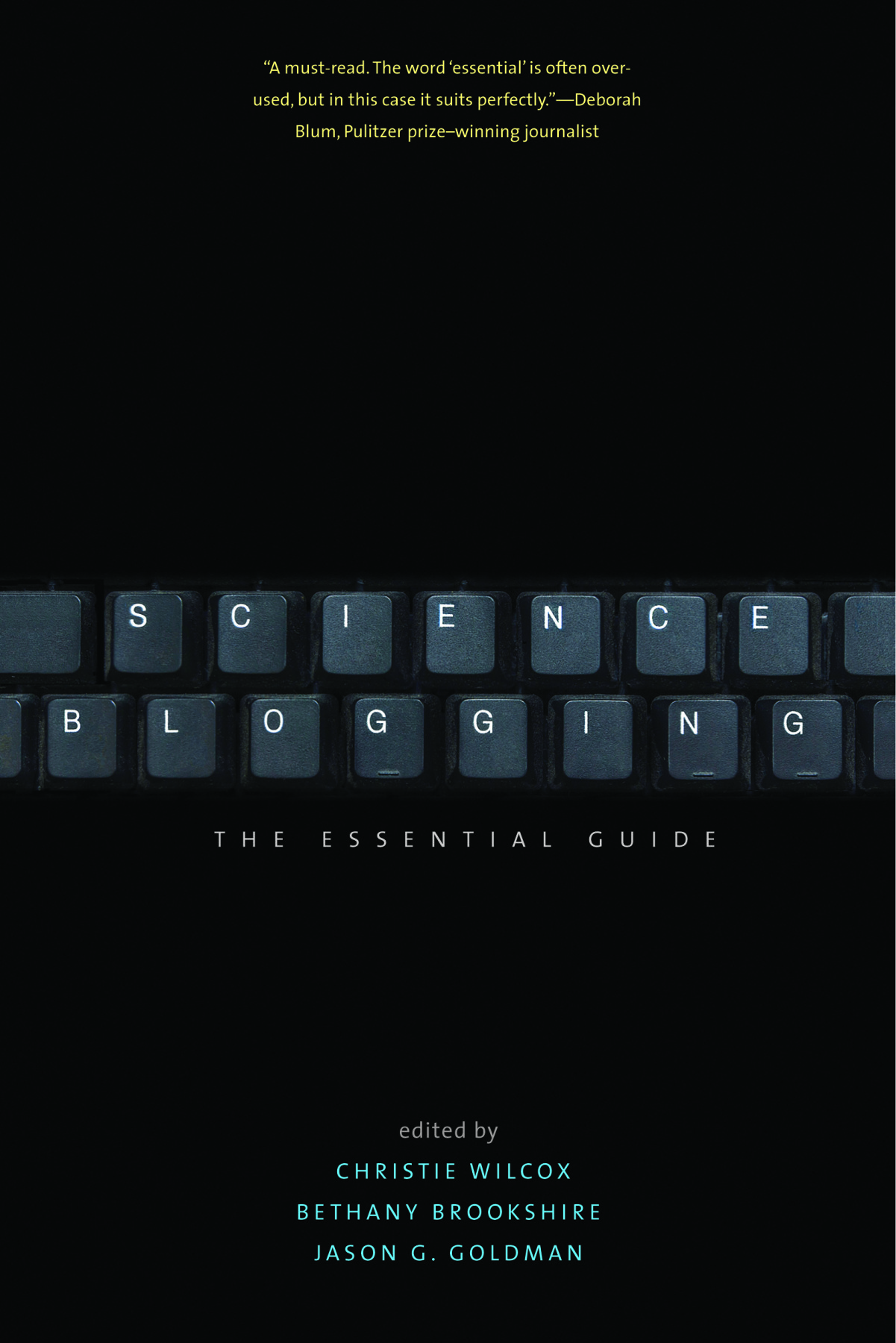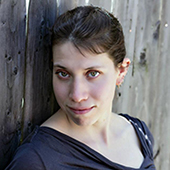Many science writers and academics approach social-media platforms, such as Twitter and Facebook, with trepidation. Most people know now that if you want to communicate science to a wide audience, the Internet can be a highly effective tool.
But social media seems to come with its own set of pitfalls. There are no editors on Twitter or Facebook. Whole books are written about the tragedies that can befall the unwary when they tweet something clever only to find that it wasn’t funny after all. Understanding the strange universe of Twitter (“How do I know when to tweet? What do I tweet? How do I say it?”) and Facebook (“Who can see this? Only my friends? Why isn’t my post being promoted?”) can seem like learning a whole new set of social skills.
The media coverage may emphasize the negative outcomes of social-media overexposure. But there are many advantages to be had. For writers and journalists, social media can be used to draw editors and readers to your work, to hunt for ideas, or even to find sources for reporting. For academics, conversations on social media can jump-start collaborations and lead the way to new initiatives. For both, Twitter, Facebook, and other platforms can be used to create and maintain social ties in professions that often seem isolating.
The book Science Blogging: The Essential Guide drew chapter authors from academia, science journalism, and beyond to contribute their expertise. Today, we ask those authors how they use Twitter and Facebook in their professional lives.
Many science communicators have a presence on more than one social-media platform, combining Twitter, Facebook, Instagram, YouTube, and more. Twitter accounts are often public. Anyone can follow a science communicator on Twitter and see what they tweet. Instagram is similar, but focused heavily on images, with relatively little commentary. Facebook pages can be public (to be seen and liked by everyone) or relatively private (visible only to friends), and Facebook uses algorithms to determine which post ends up in front of which person. YouTube videos can be visited as a one-off, or a user can follow a channel, getting alerted to new videos and engaging the comments below the videos. Which social-media platforms do you currently use? For what purpose?
Alberto Roca: I use Twitter to micro-blog and Storify to archive tweets. Twitter has the (STEM) academic, diversity, and communication audience that I connect with for my work and advocacy. Storify allows me to store relevant tweets (and occasionally other social media) from online conversations and events to serve as story idea seeds.
Danielle N. Lee: Twitter is my preferred platform. I was a slow adopter, but now I’m full on. I can communicate with broad audiences quickly. It’s my news service, water cooler, and closed-captioning device. It allows me to stay in the know on several topics. Plus, I can hammer out quick responses without signing on to my blog platform and formatting prose and attachments.
Brian Switek: Instagram. It’s a fun way to share photos and a bit of science without feeling like you’re drowning (Twitter) or having to manage lots of commentary (Facebook).
Joe Hanson: Twitter, Tumblr, and YouTube! I make videos for a living now, gotta love that YouTube.
Matt Shipman: Twitter is by far my favorite platform for reaching a wide variety of audiences. Facebook is what I use to keep in touch with family and friends.
Janet Stemwedel: Twitter. I follow an interesting assortment of people sharing lots of fascinating links and ideas. Also, I find the pressure to be concise is useful.
Many authors post their work to their personal Facebook pages or to public Facebook pages (which can be author or artist pages or pages for an institution). What are the advantages and disadvantages to sharing links to your work on Facebook?
Greg Gbur: The advantage is simply that many “ordinary” (i.e., non-scientist) people may see your work on Facebook. The disadvantage is that Facebook’s algorithmic method of selecting posts means that many of those people may never see your work at all.
Janet Stemwedel: Sometimes interesting discussions happen in the comments on Facebook, although often that means people aren’t posting those comments as comments on the blog post, which fragments the conversation. Also, sometimes Facebook friends from different parts of one’s life don’t play well with each other.
Matt Shipman: I don’t have a public-facing page. Facebook’s algorithms have made that a relatively barren landscape for reaching new audiences, since I don’t have a budget to promote posts (and don’t have catchy images, etc., that can drive viral content).
Carl Zimmer: Strong feedback [on Facebook] is good, but Twitter has a broader reach for me.
Travis Saunders: The advantage is that sometimes someone will feel passionate about an article and repost it on their own page. The disadvantage is the sense that I’m spamming people who really aren’t interested.
Joe Hanson: Advantage? Scale. Disadvantages? Rampant IP theft, mysterious and mischievous algorithms, and extremely low user engagement (meaning people don’t usually read what you link to, even if they comment on it).

Everyone these days seems to have a Twitter account. What are some of the advantages?
Glendon Mellow: The brevity, ease of sharing links, and then discussing them with a wide audience are all good. The asymmetrical following is a vital feature.
Matt Shipman: You can find and interact with online communities that have specific interests ranging from science communication to entomology. It’s a great way to reach audiences that you’re interested in (and who you think might be interested in what you’re working on).
Brian Switek: A broad audience of people who have decided to follow your work, plus the potential for others to easily boost your signal.
Kate Clancy: Getting insight into lives of people nothing like mine, to help me notice my privilege blindness.
Paige Brown Jarreau: Definitely the ability to have quick, real-time conversations, and the ability to ask questions and crowdsource answers from people in my network. To network and connect with students, to share quick updates from my research projects, the list goes on and on.
There are also disadvantages to Twitter. Many writers may first fear the potential for online abuse. That is indeed a worry for some of our authors. But there are other potential downsides.
Emily Willingham: Openings for abuse from random people.
Danielle N. Lee: There are a lot of other users out there. Your message can be drowned out or lost very easily.
Rhett Allain: If you want the feed to be useful, you have to follow useful people. The other downside to Twitter is that it is now. Time of posting and reading matters a lot.
Karl Leif Bates: To paraphrase Heidi Klum, you’re either in, or you’re out. I find I can’t half-watch it. Mostly, I chuck stuff into our institutional feed once a day, scan the inbounds, and move on. I do not very often have it running in a window. I think you have to be totally involved, watching, participating full-time to get the most out of it. I don’t, which makes me a bad [Twitter user]. So be it.
Side rant: Through its brevity, immediacy, shareability, and carelessness, Twitter has become a force of incredible evil in our social discourse. We learned in the newsroom that the first version you hear of something is rarely accurate. Twitter is that first account, via the game “telephone.” It shoots first and asks questions later. Add to that the Umbrage Du Jour and the venal public shaming and really, it’s evil. I think I said that already.
A new social-media platform can be an opportunity to sink or swim. What mistakes do you think people make when starting out on Twitter?
Janet Stemwedel: Underestimating how many people can see what you tweet and overestimating how reasonable or funny it will sound to those who see it.
Karl Leif Bates: Not looking up the proper hashtag, just winging it, thinking they can start something.
Not striving to make 140 count. It’s fun to write a complete story the size of a headline. It’s a word puzzle, but it takes some work to get it right.
Marie-Claire Shanahan: Following big famous accounts rather than individuals (follow teachers for example!). Being overwhelmed by how much there is before spending time learning how to cut it down (with lists, etc.).
Emily Willingham: Overzealous following, not building relationships, doing it only for marketing or self-promotion and not for real personal engagement.
Greg Gbur: The biggest mistake, I think, is that people often write before they think. Twitter, by its nature, encourages off-the-cuff reactions to things, but obnoxious and awful statements can spread far and wide. Get in the habit of reading your tweets before posting, and ask yourself: Does this really convey what I want to say? Also, be ready and willing to apologize if something you write gets taken the wrong way.
Twitter can seem a little difficult to use sometimes. When reading stories of people who lose their jobs over a single tweet, it can even seem threatening. But it clearly has benefits, too. What advice would you give people who might be new to Twitter? What might help them form connections with other users?
Alberto Roca: Examine the “Following” roster of a few accounts that interest you to find other accounts to follow for your own use.
Emily Willingham: Ignore abusive people. Mute them. Be careful about engagement in general. And still, as superficial as it is, keep follower count higher than following.
Try to start with people you know or from your institution, social circles, etc., and build engagement from there. Don’t be in a huge hurry to gain thousands of followers. The relationships take time.
Danielle N. Lee: Start slow. Decide the type of conversations you want to participate in. Focus on listening first. Then when it’s time to tweet, focus on tweeting about something you are witnessing—an event, a paper, an observation. When you are live tweeting something, you come to realize the beauty and utility of Twitter. People will engage you because you are telling a story and they want to know more. Each tweet builds this amazing story, sentence by sentence.
Marie-Claire Shanahan: Don’t be afraid to change up your feed. Don’t be afraid to unfollow when tweets don’t interest you. Make your feed a place you want to be.
Be yourself, be a real person in your tweets. Show what you’re passionate about and sometimes the everyday bits of what it means to be you. Tweets about being nervous about certain parts of my job have led to really interesting and supportive conversations.
Glendon Mellow: Listen. Join in when you feel it’s worth saying something. Find a hashtag in your wheelhouse, and see if regular discussions are happening. Be funny and gracious. Saying “This post by @___ is fascinating because of X” is so much better than just a RT [retweet].
Zen Faulkes: Like any good conversation, you have to listen, respond, and offer new jumping-off points for discussion.
Carl Zimmer: Figure out what you want to do with it. Don’t do it because other people tell you to.
Which science bloggers should you follow? Many authors suggested popular science writers, artists, or funny academic-parody accounts. But in the end, Karl Leif Bates put it best.
Karl Leif Bates: I don’t think there’s an account everyone should follow. That’s the beauty of Twitter—make your own distorted reality, man.

Bethany Brookshire is an award-winning science writer at Science News and Society for Science & the Public. She runs the Scicurious blog and is the web producer and social-media manager for Science News for Students. She is one of three editors of Science Blogging: The Essential Guide (Yale University Press). She is also the guest editor of The Open Lab Anthology: The Best Science Writing Online, 2009. Bethany is based in Washington, DC. Find her at her website, or follow her on Twitter @scicurious.



